Introduction Genes, the intricate strands of deoxyribonucleic acid (DNA), are the essential building blocks of life. Understanding their significance is crucial as they not only shape the characteristics of living organisms but also profoundly impact our health. This comprehensive guide aims to delve deeper into the world of genes, exploring their composition, influence on health,
Introduction
Genes, the intricate strands of deoxyribonucleic acid (DNA), are the essential building blocks of life. Understanding their significance is crucial as they not only shape the characteristics of living organisms but also profoundly impact our health. This comprehensive guide aims to delve deeper into the world of genes, exploring their composition, influence on health, the groundbreaking Human Genome Project (HGP), genetic testing, and recent discoveries in the realm of genetics.

Image by: www.newyorker.com
What are Genes?
Genes, comprised of DNA, hold the biological instructions that determine the development, growth, and reproduction of life. These strands of DNA are not merely abstract entities; they carry sequences that dictate physical and biological traits, influencing everything from appearance to behavior.
A. Composition of Genes
The composition of genes involves a combination of four nucleotide bases: Adenine (A), Cytosine (C), Guanine (G), and Thymine (T). These bases pair together, forming sequences that guide the production of proteins responsible for specific characteristics such as hair color, height, and eye color.
B. Chromosomes and Inheritance
Genes find their home in chromosomes, located within the cell nucleus. The inheritance of genes follows a fascinating process – humans receive 23 chromosomes from each parent, determining traits and potential susceptibility to genetic disorders.
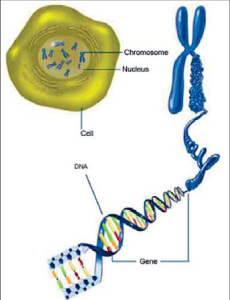
Image by: likewebov.life
Impact on Health
Genes wield significant influence over internal and external factors, from determining eye color to influencing disease susceptibility. Changes or mutations in genes can lead to the formation of improperly functioning proteins, giving rise to genetic disorders. Diseases like sickle-cell anemia and Huntington’s disease are among the outcomes of such mutations.
Where Do Genes Come From?
- Diploidy: Organisms with cells containing two complete sets of chromosomes.
- Parental Contribution: Humans inherit chromosomes from both the female and male parent.
- Sex Determination: X and Y chromosomes determine an embryo’s sex.
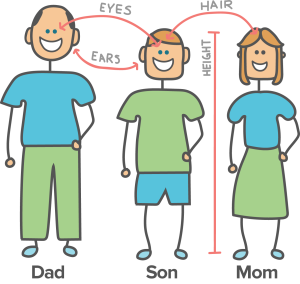
Image by: www.khanacademy.org
The Human Genome Project (HGP)
- Initiation: Started in 1990 with the goal to identify and map the entire human genome.
- Completion: Successfully finished in 2003, providing valuable data accessible on the internet.
- Scope: Explored genetic makeup not only in humans but also in other organisms
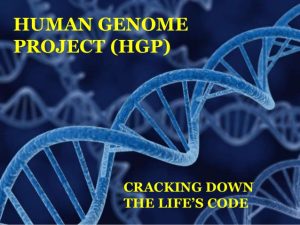
Image by: mydnahealth.co.uk
Genetic Testing
Advancements resulting from the HGP paved the way for genetic testing, a powerful tool enabling the identification of genes causing inherited diseases. Genetic tests, numbering around 2,000, aid in the diagnosis of genetic disorders and the assessment of disease risks. This form of testing is instrumental in various scenarios, from identifying genetic diseases in unborn babies to determining the risk of developing specific conditions.
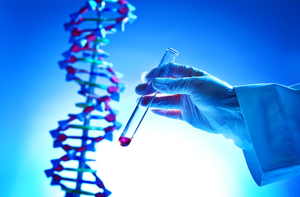
Image by: www.pennmedicine.org
Recent Discoveries: Epigenome, Gene Marking, and Gene Therapy
In recent years, geneticists have unveiled a layer of heritable genetic data known as the epigenome. This collection of chemical compounds influences gene expression, offering insights into the regulation of cell functions.
A. Gene Marking
Epigenomic compounds leave marks on the genome, influencing how cells utilize DNA instructions. These marks can be passed from cell to cell and, intriguingly, from one generation to the next. Specialized cells play a crucial role in controlling various functions within the body, with the epigenome orchestrating changes throughout a person’s lifetime.
B. Gene Therapy
Gene therapy, although in its early stages, holds immense promise. This medical technique involves using sections of DNA to treat or prevent diseases. Scientists are exploring its potential in treating inherited disorders like hemophilia and acquired conditions such as leukemia.
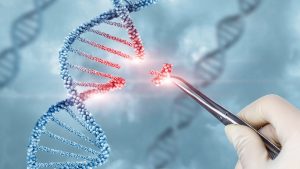
Image by: www.livescience.com
Gene Testing for Predicting Diseases
- Predictive Role: Genetic information helps predict diseases like early-onset Alzheimer’s and breast cancer.
- BRCA1 Gene: Identifies higher breast cancer risks, facilitating informed decisions.
Genetic Tests for Personalized Therapy
Pharmacogenetic testing is a groundbreaking approach that examines genetic changes to determine the most suitable medications and doses for patients. This personalized form of testing helps predict potential side effects, ensuring effective and tailored medical treatment.
Conclusion
Genes, as the intricate code of life, continue to captivate scientists and researchers. The journey into the realm of genetics, from the elucidation of basic concepts to the groundbreaking HGP and the promising horizons of gene therapy, underscores the significance of understanding our genetic makeup. As the field evolves, genetic information is poised to revolutionize personalized medicine, offering tailored solutions for improved health and disease prevention. The unraveling of genetic mysteries continues, promising a future where our understanding of genes shapes a healthier and more informed world.

















Leave a Comment
Your email address will not be published. Required fields are marked with *